Home » Construction Services (Page 2)
Category Archives: Construction Services
I-49 Missouri-Arkansas Connector Now Open for 290 Miles
Another link in the planned six-state I-49 has been completed with five miles of roadway opening between the Arkansas and Missouri border.
The project’s completion leaves a 290-mile interstate route from Kansas City, Missouri, to Fort Smith, Arkansas. The last five miles of the connector opened October 1.
The I-49 and I-29 corridor will also eventually pass through Louisiana, Iowa, South Dakota and North Dakota, stretching for 1,600 miles and connecting at I-29 in Kansas City. Plans are to add links to New Orleans area ports.
I-29 extends from Kansas City to Winnipeg, Canada. The eventual goal is to provide an uninterrupted Interstate Trade Corridor from Canada to New Orleans and into Central and South America to the Panama Canal, according to the I-49 International Coalition.
Transportation officials in Arkansas and Missouri say they have been discussing the connector for more than 25 years. Construction has progressed in phases.

Shaking hands, from left, are Arkansas Governor Asa Hutchinson and Missouri Governor Mike Parson at the ribbon cutting for the last section of the I-49 Missouri-Arkansas Connector.Missouri Department of TransportationThe final five miles were built between Pineville, Missouri, where construction ended in 2012, and the Arkansas state line.
The project involved building a four-lane divided highway west of Route 71. Access to the newly designated interstate section is only by interchanges. A new interchange was built at Missouri Route 90 west of Jane. Five bridges were also constructed.
The project’s estimated cost was $70.3 million.
“This high-quality roadway will help promote tourism, business investment and workforce opportunities between our two great states,” said Missouri Governor Mike Parson.
Did you miss our previous article…
https://www.tortowheaton.com/?p=403
Matt Pruss, Pruss Excavation, named Equipment World’s 2021 Contractor of the Year

Matt Pruss, Pruss Excavation, Dodge, Nebraska, has been named Equipment World’s 2021 Contractor of the Year.
In accepting the award, Pruss said: “This is a great group of contractors and I was super excited to meet them. I’m very honored to be part of this.”
The construction linage is deep in the Pruss family. Matt’s grandfather, Jim Sr., started Pruss Excavation in 1968. His father, also named Jim, joined him four years later, and Matt came on board in 2001. The company now has 40 employees and has $7 to $10 million in annual revenues performing levees, road work, wetlands, site work and lagoons.
The event also marks the first time in the program’s 21-year-history that the succeeding generation of a former finalist has been named both a finalist and a winner. Jim Pruss Jr. was a Contractor of the Year finalist in 2004.
The company now works within a 250-mile radius of its Dodge, Nebraska, headquarters. Local authorities called on the firm when two major floods hit Nebraska in 2011 and 2019. The company’s existing fleet of pull-behind scrapers plus a few more that it bought from as far away as Florida proved themselves on U.S. Army Corps of Engineers flood mitigation projects during the 2011 flood.
“That was our huge giant boost,” Matt says. “We went from $3 million a year to $8 million.”
That work ethic continued on the next major flood Nebraska went through, this time in 2019. “They continued to push through on our job even while they were doing levee work for the state,” says one client. “It was a big deal. Matt knows he can’t just be an owner and pick up a paycheck. He’s very involved and he drives the ship on their modeling.”
The Equipment World Contractor of the Year program has been sponsored by Caterpillar since its inception in 2000. It recognizes contractors who display the highest standards of business acumen, equipment management expertise, attention to safety and community involvement. Each year, 12 finalists receive an expense-paid trip to Las Vegas to participate in roundtables and an award ceremony.
Did you miss our previous article…
https://www.tortowheaton.com/?p=379
How to Solve Your Construction Labor Shortage

Still looking for the proverbial easy button to fill your talent pipeline? We hate to break it to you: there isn’t one.
“If you’re in this industry and not being the biggest promoter of it, you’re part of the problem,” says Benjamin Holmgren, president of Buildwitt Jobs. “You’re not going to solve it for the industry. Solve it for you.”
Holmgren was joined by Natasha Sherwood, executive director of the Independent Electrical Contractors Florida West Coast Chapter, and Steve Cona III, president and CEO of the Associated Builders and Contractors Florida Gulf Coast Chapter, in a recent panel discussion led by Autumn Sullivan, director of marketing and experience for Mobilization Funding.
The panel explored the issue of why skilled trade workers are leaving the industry, the impact of culture on recruitment and retention, and what companies can do to increase their talent pipeline.
Recruiting and retaining the next generation
So, can everyone stop blaming millennials already? Continuing to drone on about how millennials lack worth ethic is so 2010. Older millennials, those born in the 1980s, are established and in positions of power in their careers. Where the industry needs to focus its attention is Gen Z and Gen Alpha.
“I don’t believe it’s so much a labor shortage, as a shortage of leaders who know how to lead the next generation,” said Holmgren. “Kids my age want to have a mission to get behind. They want to have a vision. They want to be led, trained and developed.”
The companies that have solved this understand this workforce development crisis is not about millennials. “Taking ownership of solving this for your company is the elixir,” said Holmgren.
Shop class makes its comeback
Getting in front of Gen Z and Gen Alpha starts in school. Trade education in middle school and high school was nearly extinct but is slowly making a comeback. Until there is wider support for the curriculum at a state and district level, getting involved at an individual level is critical.
Construction companies can help through apprenticeships and mentor programs. Contractors involved in mentorship see better hiring success because they already have name recognition with students, panelists said.
“The greatest benefit to our industry would be a solid pipeline out of high school and into the trades,” said Cona. “It has to be a statewide effort in our educational system to promote opportunities in all occupations that don’t necessarily require a four-year degree. The average age of our apprentice is 26-27 years old, and we have to get that lower to 21-22 years old. It can’t be an afterthought.”
Outside of local efforts, Holmgren suggests meeting the younger generation where they are online.
“It’s one thing to put on a trade show or job fair, but what about Instagram? TikTok? One thing you can start doing today is using social media to tell the story of your business and show people what it’s really like to work in your industry. It’s not that you have to make it look cool; the trades are already cool. Come join us – that’s what we need to be telling people.”
Work culture in construction
Taking ownership of the construction recruitment and retention problem also means taking a hard look at company culture. For better or worse, every company has a culture. How that culture has evolved depends on how it is emulated and nurtured daily.
Work culture has been cited as a major factor in many skilled-trade veterans leaving their employer or the industry entirely. While culture is a hot topic in the construction industry, and often framed as something only young people are pushing for, it has a significant impact on retention across the board.
“You can tell that no matter the age of the employee, they are all looking for a culture that has a family atmosphere, opportunities for advancement, flexible hours and good benefits,” said Sherwood. “I just helped a fourth-year apprentice graduate who had an opportunity to go anywhere. He took a job at a company that paid $2 less an hour because it was a good fit. There’s that level of appreciation that is sometimes more important than the dollar bottom line.”
lternative talent pipelines
Beyond young people, there are many other viable talent pools and untapped markets to help fill the skilled-worker pipeline. Correctional institutions, foster care systems and the military are just a few options.
“We’re looking for all sorts of avenues to fill that pipeline, and one of those is folks coming out of corrections,” said Cona. “We’re getting asked by state leaders and politicians to work with them to help develop skills while people are still incarcerated. So whenever they get out, they can get plugged back into society. If you can give people opportunities and jobs when they get out of being incarcerated, their chances of going back are very slim.”
“The military does a great job recruiting kids, with ROTC officers and billboard campaigns,” said Sullivan. “The trades need to be seen as a viable option. You can feed your family, you can travel around the country – there’s a lot of opportunity depending on where you want to go with it.”
Continuing education for retention
While there are required continuing education credits in the construction industry, employers should also consider training that provides employees with a path toward a goal they value, such as moving from apprentice to superintendent.
“In this day and age in this economy, you have to invest in training your workforce. There are no unemployed electricians and plumbers sitting on the sideline,” said Cona. “You have to build your pipeline by investing in people who might not necessarily have the skills that you need at that time. Invest in your employees, train them, put them in apprenticeship programs and maintain it through their lifecycle as an employee.”
An engaged employee is someone who stays with you.
Changing the narrative
While the narrative that construction is a dead-end job is a systemic problem, individual companies can start making strides today to reframe the conversation and illuminate the opportunities.
“This country was built because people learned skills, created things and built things. No one can say this country was built because people went to college. That’s what we need to continue to push,” said Cona. “As parents, as an industry, we need to be better at pushing the narrative that this is a viable option.”
“Don’t people get tired of talking about finding good help?” adds Holmgren. “We know you can’t find good help. Do something.”
“I’m not interested in solving the industry’s labor-shortage challenge, but if there is one person who can take something from this and it lights a spark and they can solve it for them, that’s a win.”
Watch the full webinar here.
Did you miss our previous article…
https://www.tortowheaton.com/?p=363
Women in Construction: Planning Your Post-Pandemic Career Path

If you’re a woman working in the post-pandemic world, construction isn’t a bad place to be. While there is still a wage gap between men and women, it’s less than in other industries, with women earning 99.1% of what their male counterparts make.
The pandemic hasn’t slowed things down, either. A survey of 700 women in construction in March found that 58% said they’re working about the same compared with before the pandemic, while nearly one-third (32%) said they’re working more, and only 1 in 10 reported working fewer hours. Meanwhile, 71% said opportunities are on the increase, while 28% said they were about the same, leaving just 1% to report they were declining.
This leaves women in construction with a leg up on women in other fields, such as retail and hospitality, who have been struggling to retain their jobs during the pandemic. Instead of scrambling to get back to where they were pre-COVID, many women in construction are riding the crest of a wave.
Opportunities Abound
Restaurant, retail, and travel industry closures hit women in those industries hard. Employment in February was down by 383,000 jobs compared with the year-earlier total in retail alone. Leisure and hospitality employment job losses were even worse, at 3.9 million.
Although many jobs in the latter sector are opening back up as travel and tourism increase, many displaced workers will see a chance to shift gears and find opportunities await in construction, where a March estimate identified a need for 200,000 skilled craft professionals. And these positions pay well, upwards of $66,000 for a carpenter, for example. To compare, a general contractor can make an average salary of $70,000 to $95,000 a year.
There’s room for growth, too: Women make up just 10.3% of the construction workforce, which means there’s both a challenge and an opportunity.
Stereotypes Persist
Many women may not even consider construction because of stereotypes that have kept trade industries male-dominated for some time. Media representations from Bob the Builder to Wreck it Ralph to Tim Allen’s Home Improvement are geared toward male audiences.
Women, meanwhile, have been dismissed as no longer “needed” in construction jobs.This is similar to what happened after World War II ended, with “homemaker” conventions resurfacing to replace Rosie the Riveter.
It’s still assumed by many that construction is a male industry. But that’s simply a false assumption, and it’s limiting both women and the companies that could be benefiting from their talents.
Challenging those stereotypes will be important moving forward in order to take advantage of opportunities that are opening up. A more diverse workforce increases the labor pool. It also boosts productivity and provides a greater variety of perspectives to promote innovation and better decision-making.
Technologies & Trends Emerge
From drones and artificial intelligence to 3D printing and modeling, construction technology is becoming more relevant by the day. As the industry as a whole embraces data as a driving factor in decision-making, it is becoming more obvious that the soft skills women bring to the table as effective communicators and team players improve both productivity and safety. That means, for women in tech, the emphasis on working smarter could help them get their foot in the proverbial door.
Similarly, emerging trends in construction will expand opportunities for women in tech to break into adjacent industries. For example, new directives designed to address the climate crisis have resulted in an industry-wide push to achieve net-zero energy in both new construction and retrofitting. As a result, subcontractors in heating, plumbing, electrical, and alternative energy (to name a few) will be looking for sustainability experts to help them “go green” and stay relevant.
Entrepreneurship is Rewarded
Self-employed construction workers are a force to be reckoned with. More than 23% of U.S. construction workers were self-employed in 2018, compared to 10% of the broader workforce.
As of 2016, more than one-third of carpenters (33.6%) were self-employed, nearly 42% of floor layers were, along with 38% of construction managers and 41.3% of construction and maintenance painters.
That means there’s plenty of opportunity to be your own boss under the right conditions. Of course, that takes understanding things like the need for various kinds of insurance, such as workers’ compensation (if you have employees), property and liability, and general liability.
It also means having enough capital and credit to make a go of it. If you’re thinking of going into business yourself, now is the time to get your finances in order so you’ll be in a position to invest in yourself and your company. As an added bonus, taking steps to build your credit can save you up to $11,460 per year in interest rates and fees on loans and credit cards.
## Alternatives are Available
If you have taken time off from your career, either due to the pandemic or personal reasons, you have options. Returnships encourage professionals who’ve taken a break from the workforce to get back in the game.
These paid internships allow companies and potential employees to get a feel for each other and provide training that can help in the long run, whether you wind up with that particular company or not. Companies like CDM Smith and Caterpillar are among those that offer or have offered returnships, often with a focus on women.
Opportunities in construction will continue to expand, but as stereotypes persist, it’s important for women to remain confident in what they have to offer, because it’s significant. Women can provide a broader and more diverse pool of labor and ideas that will serve the construction industry well in the years to come.
Schedule a Demo
Jessica Larson is a married Midwestern mom and a solopreneur. She creates online courses for students, and has started and run several other businesses through the years. Her goals are to support her family while still actually spending time with them, to act as an entrepreneurial role model for her two daughters, and to share what she has learned through The Solopreneur Journal.
Did you miss our previous article…
https://www.tortowheaton.com/?p=351
How to Repaint Construction Equipment

It’s tedious, time-consuming and often overlooked. A fresh paint job may not be on the top of your preventive maintenance priority list, but it’s a critical step to extend the life of your equipment.
Paint protects your equipment from harsh weather conditions, prevents rust and corrosion, maximizes resale value and ensures a professional image.
The process is simple, but even with the right tools, it can be painstaking. You can buy a sandblaster, pressure washer and paint gun to do the job yourself or have your local dealer do the refurbishing for you.
Here is the process for painting construction equipment:
1. Prepare the surfaces
The quality of the final paint job is all in the preparation. To start, remove all decals from the machine. A heat gun or adhesive remover and a scraper will make this process easier.
Next, manually or mechanically sand the machine to remove the old paint. Pay special attention to areas that have rust or corrosion. Use a wire brush or grinding attachment on deep pockmarks. And as always, wear personal protective equipment to prevent skin lesions, eye contamination or particle inhalation.
Finally, replace or repair any dented or damaged external parts. If you can’t find replacement parts for older machines, you can also patch the area with a fiberglass filler or polyester resin.
2. Clean and degrease
After the surface is prepared, thoroughly clean the machine. Use a pressure washer, washing detergent and degreasing agent to remove all dirt and contaminants. Any dirt or grease residue left on the machine will ruin paint adhesion, so washing the machine more than once may be necessary.
Make sure to comply with local environmental regulations for contaminated wash water disposal. Allowing wash water to enter the surface and groundwater reservoirs can result in hefty fines, jail time and expensive cleanup.
3. Preparing equipment for painting
Once the machine is smooth, clean and dry, the surface is ready for masking. Fancy supplies aren’t necessary for this step; masking tape, masking paper, cardboard and plastic will do the trick.
Remove any accessories, such as mirrors or mud flaps, that should not be painted. Tape off any parts or accessories, like door handles or chrome, that cannot be removed. Cover tires and tracks and windows with paper or plastic.
If you are painting indoors, protect the floor and surfaces in your shop with cardboard and plastic draping – overspray will happen. A proper ventilation system is also critical to remove any harmful paint fumes.
If you are painting outdoors, keep temperature and wind conditions in mind. Paint will not dry properly in cold temperatures, and high winds will result in dust, uneven coverage and excess overspray.
4. Paint the machine
Spraying paint will guarantee even coverage and a smoother finish than rolling or brushing.
Professional painters recommend using an HVLP (high-volume/low-pressure) spray gun set between 25-30 psi. Ideally, the temperature should be around 68°F to ensure proper paint viscosity and adhesion.
Always hold the gun perpendicular to the surface of the equipment. Maintain a constant distance of about 6 to 8 inches away from what you are spraying. Start with the edges and hard-to-reach areas before painting the larger flat areas, moving the gun at a steady rate of travel.
Apply a primer to areas where bare steel or filler is exposed. Allow the primer to dry for 24 hours before applying the base coat. Apply the paint in thin, even layers. Wait 15 to 20 minutes or until the paint is tacky to the touch before applying the next coat. As a rule of thumb, use two to three coats of paint to ensure adequate coverage and durability.
Take proper precautions to ventilate the space and protect your eyes, nose, mouth and skin from dangerous fumes and chemicals. A full-body paint suit, respirator mask and gloves are essential.
5. Apply decals
Once the paint has dried for at least 24 hours, you can apply new decals to the machine.
The key to installing any decal and making it last is having a clean surface before you start. Wipe the area with rubbing alcohol to ensure proper adhesion. Position the decal on the machine with tape and mark the location where you intend to place it with a pencil. Carefully remove the backing and position the top corners on your pencil marks. Take a squeegee and slowly smooth the decal onto the machine, starting at the top and working your way to the bottom and edges, removing any air bubbles along the way.
Now that your machine looks close to new, you can earn top dollar for your trade-in or turn some heads on the next jobsite.
Did you miss our previous article…
https://www.tortowheaton.com/?p=348
Industry Roundup: H & E relocates Little Rock branch
H & E Equipment Services has relocated its Little Rock branch, renovating a 6,450-square foot facility in Mabelvale, Arkansas. The facility includes a fully fenced yard, offices, parts warehouse and a repair shop with six service bays.
“To best serve customer demand, we recently sold our Komatsu dealership rights in Arkansas along with our former Little Rock property to focus specifically on rentals, the largest growth area of our business,” says Trent Taylor, branch manager. “Our plan is to aggressively grow our rental fleet and expand our product offering of quality equipment with competitive rates throughout the central Arkansas area.”
The Little Rock branch specializes in the rental of aerial lifts, telescopic forklifts, earthmoving machinery, compaction equipment, generators, compressors and more.
Hyundai adds Delta Power Equipment

Left to Right: Cameron Currie, general sales manager and Brad Blain, construction sales manager, Delta Power Equipment.Hyundai Construction Equipment Americas
Hyundai Construction Equipment Americas has added Delta Power Equipment to its North American dealer network. Delta serves agricultural, construction and power sports markets in multiple locations across Ontario. Hyundai equipment will be available at the company’s Essex, Forest, Mitchell, Sparta, Waterford and Winchester locations.
ProSource Machinery named Hydrema dealer
ProSource Machinery will now offer Hydrema articulated dump trucks. The company will represent Hydrema throughout Colorado from its Platteville location.
Chadwick-BaRoss buys J. F. McDermott
Chadwick-BaRoss has completed acquisition of waste-and waste-water-industries supplier J. F. McDermott. Chadwick-BaRoss now has nine locations in New England.
MANUFACTURERS, SUPPLIERS
Yanmar announces new president, executives

JohnsonYanmarYanmar Compact Equipment and ASV Holdings brands have named Tate Johnson president, Lee Thole director of aftermarket and David Gannon as director of channel development.
Johnson joined the company as commercial director last year, overseeing sales, national accounts, channel development and marketing. As president, he will further develop growth initiatives for the company as the two brands progress in a joint vision of Yanmar Compact Equipment North America.
“As we continue to grow, we will seek to provide even more resources and support to our dealers and in turn, the end user customers,” says Johnson. “The addition of Lee and David is the logical next step.”
Thole’s responsibilities as aftermarket director will include strengthening post-sales support functions and aftermarket strategy. Gannon will work closely with the company’s dealer network, working to recruit new dealers and assist current dealers.
Ritchie reaches $500 million mark with Marketplace-E
Ritchie Bros. says its Marketplace-E price-controlled option has seen sales of more than $500 million in the past 12 months.
The option includes “Buy Now” and “Make Offer” features. Ritchie says it’s driving buyers to the site through real-time demand data. As a result, items “are selling approximately 40% faster on Marketplace-E,” says Kari Taylor, chief revenue officer. Ritchie says more than 2,500 customers used the service to sell items, including Sunbelt Rentals.
“We now have access to an expanded footprint and tools to help us better manage how, when, where, and what price to sell our assets—because we have the flexibility of choosing the proper Richie Bros channels, using a Ritchie Bros. location, or remarketing directly by Sunbelt we are improving the efficiency of our disposition process as well as recovery on equipment sold,” says James Dennis, vice president of fleet management at Sunbelt.
Sheppard joins Machinery Advisors
Luke Sheppard of Sheppard & Company Consulting has joined the Machinery Advisors Consortium. George Russell, MAC co-founder, says Sheppard “will complement the other MAC Advisors with his experience in construction and forestry equipment, his leadership insights revealed in his first book, and his demonstrated results driving success in the key parts and service departments of a large CE dealership.”
Equipment confidence index drops in September
The Equipment Leasing & Finance Foundation’s monthly confidence index dropped from 66.6 in August to 60.5 in September. The index is a qualitative assessment of prevailing business conditions and future expectations as reported by key executives in the equipment finance sector.
When asked to assess their business conditions over the next four months, 17.9% of executives responding said they believe business conditions will improve over the next four months, down from 35.7% in August. Another 71.4% believe business conditions will remain the same over the next four months, up from 64.3% the previous month; 10.7% believe business conditions will worsen, up from none in August.
Executive respondents cited several factors leading to increased uncertainty, including the Delta Covid-19 variant and the inability to fulfill demand because of labor shortages and supply chain shortages.
Woods Equipment names dealer channel director
Woods Equipment has named Darwin “Dag” Parsell to its newly created director of dealer sales channel position. Parsell, previously regional sales manager, will manage sales activities within the North American Woods Ag and Turf dealer organization.
Magni opens Houston-area office
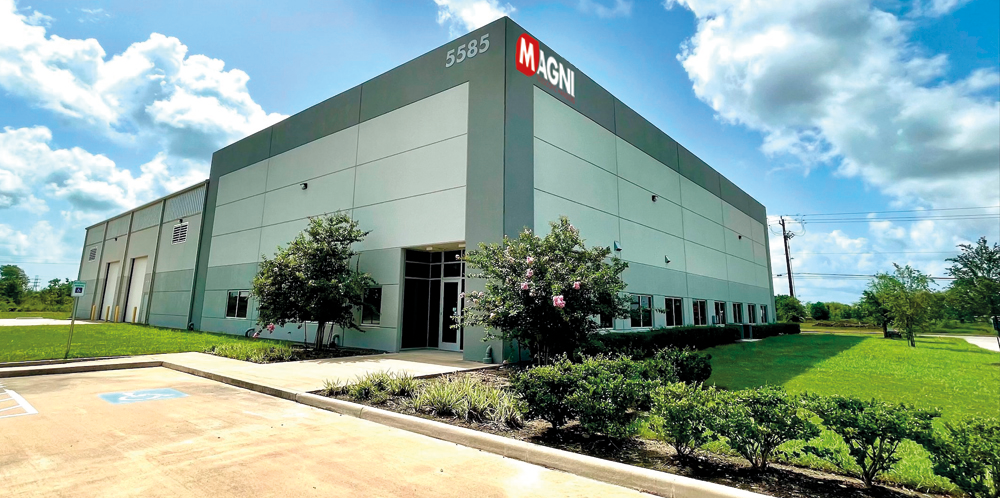
Magni Group says it will use its new facility in Pasadena, Texas, as its main logistics hub for the distribution of spare parts and machines. The facility is in addition to the company’s current U.S. headquarters in New Jersey, which also serves as a parts and machine distribution facility. Magni has also announced plans to start work on a new headquarters in the first quarter of 2022.
Did you miss our previous article…
https://www.tortowheaton.com/?p=310
OSHA to Ramp Up Heat-Related Enforcement and Inspections

The Biden administration is calling for stepped up enforcement and increased efforts to prevent heat-related illnesses on the job.
As part of that initiative, the U.S. Occupational Safety and Health Administration plans to increase workplace enforcement and inspections, especially on days when the heat index is above 80 degrees.
“On days when a recognized heat temperature can result in increased risks of heat-related illnesses, OSHA will increase enforcement efforts,” the agency says.
OSHA says it will also develop a National Emphasis Program, in which it will place temporary, intense focus on heat inspections. It also plans to develop a workplace heat standard.
Though construction is among the top industries affected by heat, the administration’s plan is broad-based, also including indoor workers, as well as schools and nursing homes. It cites climate change as leading to extreme heat, which “is now the leading weather-related killer in America.”
“Rising temperatures pose an imminent threat to millions of American workers exposed to the elements, to kids in schools without air conditioning, to seniors in nursing homes without cooling resources and particularly to disadvantaged communities,” President Joe Biden said in announcing the initiative.
The U.S. Department of Labor reports that 43 workers died from heat-related illness in 2019 and 2,410 suffered serious injuries and illnesses from heat. The agency notes that heat illnesses are often underreported. With climate change, DOL says, those conditions will worsen.
OSHA has ordered its area directors throughout the country to do the following:
Prioritize inspections of heat-related complaints, referrals and employer-reported illnesses and initiate an onsite investigation where possible.Instruct compliance safety and health officers, during their travels to jobsites, to conduct an intervention or open an inspection when they observe employees performing strenuous work in hot conditions. An intervention involves providing the agency’s heat poster and wallet card, discussing the importance of easy access to cool water, cooling areas and acclimatization.Expand the scope of other inspections to address heat-related hazards where worksite conditions or other evidence indicates these hazards may be present.
OSHA also calls on employers to intervene with its workers in extreme heat by requiring regular breaks for water, rest and shade; training workers on identifying heat-related symptoms and what to do when a worker suspects a heat-related illness; and taking periodic measurements to determine workers’ heat exposure.
In October, OSHA plans to start the rulemaking process to develop a federal heat standard for indoor and outdoor workplaces.
The agency says the forthcoming National Emphasis Program on heat hazard cases will target high-risk industries and focus resources and staff on heat inspections.
“The Department of Labor, the Department of Health and Human Services, the Environmental Protection Agency and other agencies will work together to help ensure that the American people have safe and healthy working conditions, provide cooling assistance to homes and neighborhoods, and coordinate with state and local officials to bolster their resilience and address the impacts of this threat,” Biden said.
Did you miss our previous article…
https://www.tortowheaton.com/?p=307
Plagued with Low Battery Life? These Chargers Will Keep Your Devices Ready to Go
Time for a battery check. You rely on your devices especially phones to power your business. But will they last a full day which in contractor terms means way past eight hours?
The good news: There are a slew of good, reliable and affordable charging options out there. But whatever you buy, be sure to look for these basics:
Size and Capacity: A good rule of thumb for power banks says the bigger the battery, the greater its capacity and the more ports it can accommodate. It’s easy to find an inexpensive one that will fit in your pocket and, with 5,000mAh, reload your phone once or twice. It’s also not hard to find something a bit more robust.
Power In. Power Out: When shopping for a charger or power bank, be sure it’s compatible with the device(s) you’ll be using it with. Most will have a USB-A port for reloading the battery and for sending the juice to your device. More and more devices are relying on USB-C ports, as they are also compatible with most fast-charging options.
And, of course, Apple has a port all its own: Lightning. However, with the Apple iPhone 12, charging can be done with a USB-C port.
So, regardless of the charger or battery pack you buy, be sure its ports match up with your device’s cords.
Wireless Charging Is a Real Thing: Newer models of smartphones and other devices may be set up to be charged without having to be plugged in. Wireless charging relies on electromagnetic induction to reload your device. In short, wireless, or Qi, charging works by transmitting power from a coil in a charging unit to a coil in the receiving device. All you do is place your smartphone or other device on the pad of the receiver.
As we said, there are hundreds of charging devices on the market. With even modest study, you can find one at a travel center, truck stop, big-box store or online that fits your device and your budget.
Here’s a few to get you started:
Jackery Explorer

To the untrained or unfamiliar, putting using this portable power station in your pickup might seem like going rabbit hunting with a Howitzer. But it never hurts to be over-prepared.
Weighing in at just a shade less than 4 pounds, the Explorer packs a big charging wallop and also provides the convenience of not having to reload it too often.
It has a 100-watt AC outlet, a USB-C and two USB-A outlets, and a 12-volt car outlet as well.
And at its heart, the Explorer has rechargeable lithium-ion batteries that provide 167 watt-hours of energy storage. That means it’ll recharge the thirstiest of smartphones 16 times.
You can refill those batteries by plugging into a wall socket (about five hours) or your truck’s 12-volt system as you drive, or hook it to an optional solar panel.
The Explorer 160 sells for about $106 on Jackery’s website.
PowerDrive’s Cup Holder Power Inverter
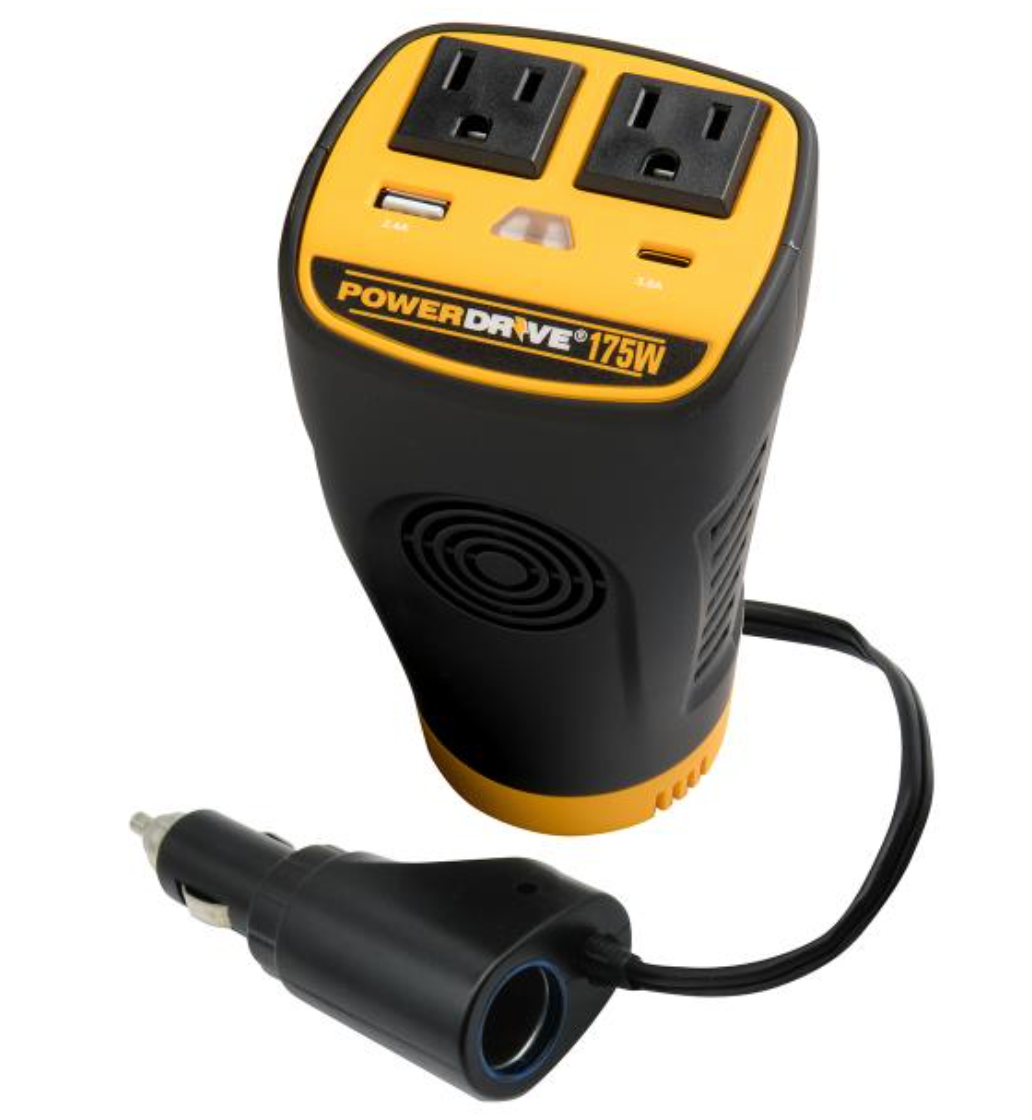
This device not only charges your devices, it also provides AC and 12-volt outlets so you can use your truck’s battery to power other appliances.
Fitting nicely into your truck’s cup holder, it has both USB 2.4 amp and USB-C 3 amp ports, in addition to the AC outlet, making it able to accommodate most of your charging requirements.
It has a 2-foot-long cable to plug into your truck’s 12-volt port.
PowerDrive is a member of the RoadPro Family of Brands, and the cup holder inverter is available at most travel centers and truck stops and sells for $32 online.
Nekteck PD 45W Type-C Car Charger
Don’t be thrown by the name. This’ll work in your truck and delivers plenty of power for a reasonable price – about $20 online.
This device fast-charges phones, tablets and laptops on its USB-C port and, at the same time, can charge a second phone on its USB-A port. It conforms to USB-C fast-charging standards and includes a good quality cable.
This Nekteck’s 45-watt output and its USB-C–to–C cable support the maximum charge rate on Android phones, the 2018 and 2020 iPad Pros, and some laptops. In addition, you can use the 12-watt USB-A port at the same time to charge a second phone or other device with any USB cable you already have.
MobileSpec Charging Bundles
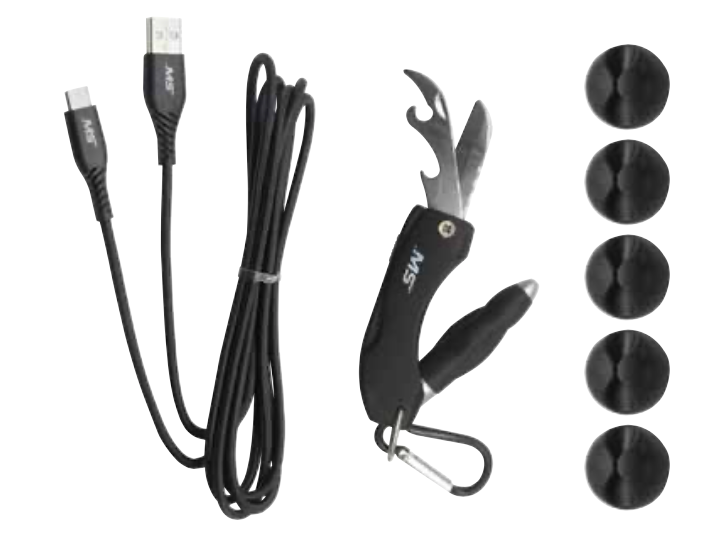
Let’s face it; your fancy smartphone is useless if not charged. And even the best, most powerful charger is of no value if you can’t get the juice to that same smartphone. The important link is the cable (yes, yes, we know, Qi allows wireless charging, but not every person has a compatible device), and MobileSpec delivers not just a good, solid charging cable but some much-appreciated accessories in its bundles.
Each bundle has a 6-foot-long Lightning to USB or USB-C to USB braided cable that has strain relief built-in, but other goodies as well. All three bundles include five cable organizers. Then you can get a bundle with a:
● Multi-tool that has a pen, knife, bottle opener and flashlight
● Phone cardholder for up to three cards
● Three-in-one phone mount (finger, stand or dashboard venter)
MobileSpec is a member of the RoadPro Family of Brands, and its bundles and other charging devices can be found at most truck stops and travel centers. Available online for under $13.
WeeGo Jump Starting Power Pack

Don’t let the name fool you. This powerful battery can:
1. Jump-start your pickup or ATV
2. Recharge your smartphone or other device
3. Fit in the palm of your hand
That makes it ideal to keep in your truck’s cab. It literally packs a lot of power and takes up little valuable space.
WeeGo makes several power packs (including the Crankenstein, which is suitable for jump-starting duties at jobsites and repair shops), and includes the 44.1.
WeeGo’s new 44.1 weighs just a pound and a half, but its lithium-ion battery delivers 440 cranking amps, so you can jump-start most vehicles. The $129 unit also has a 12-volt port, a fast-charge USB port, and doubles as a flashlight with 500 lumens of illumination.
nker 24W Three-Port USB Portable Solar Charger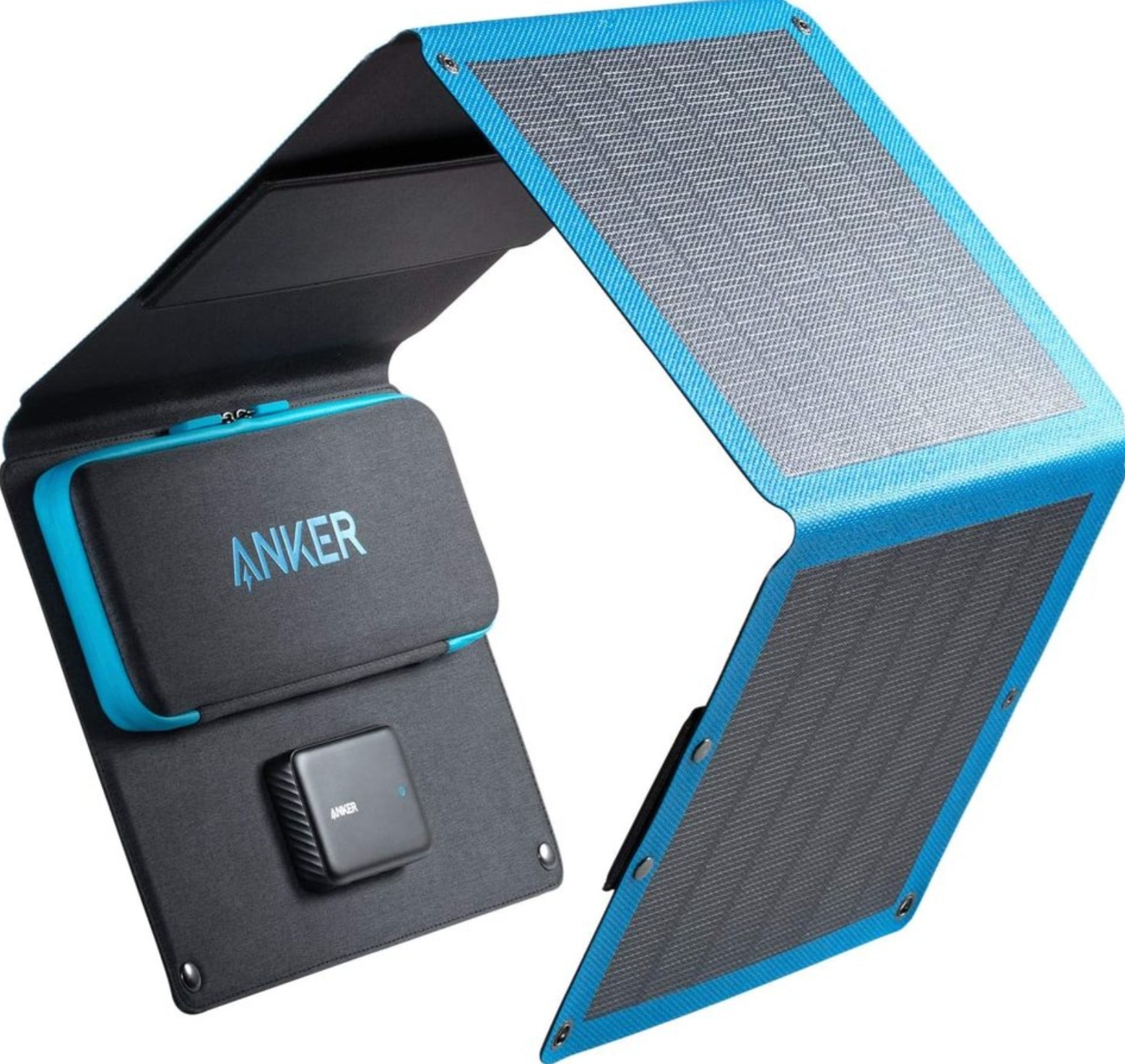
Anker is well known for producing reliable, affordable chargers and other digital devices. Among them is a solar charger; the Anker 24W 3-Port USB portable solar charger includes a foldable CIGS (thin-film) solar panel.
It’s suitable for iPhone 12/SE/11/XS Max/XR/X/8, iPad, Samsung Galaxy S20/S10/S9/S8. The solar panel’s three USB ports share a total 21W output, allowing you to simultaneously charge up to three devices. When you’re not charging, the PowerSolar folds away for easy storage. The built-in storage compartment can hold cables or small mobile devices. It comes with an 18-month warranty.
Available online for $79.99.
myCharge HubMax 10050 Portable Charger
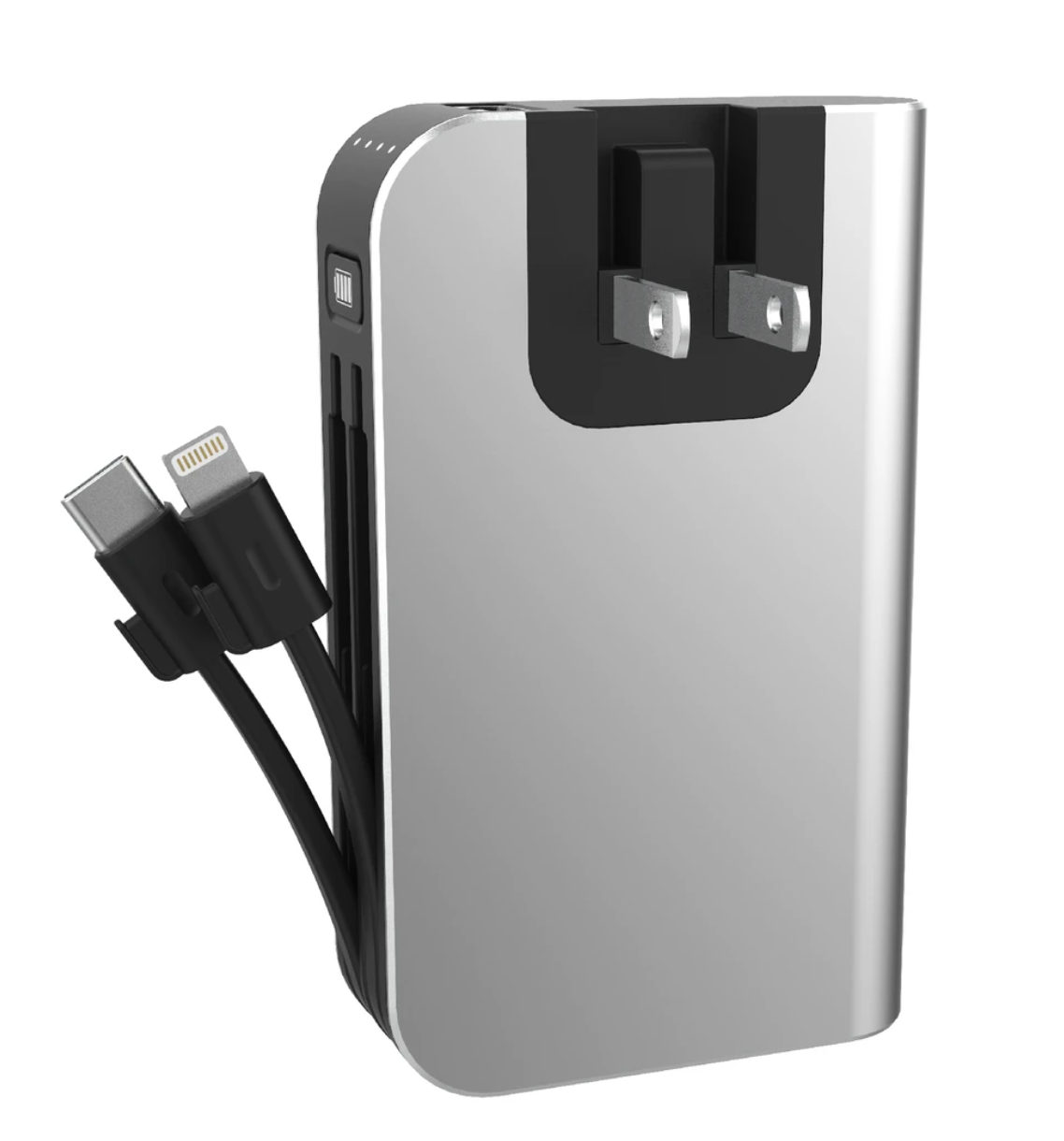
The myCharge HubMax 10050mAh portable charger has an integrated Apple Lightning cable, an integrated USB-C cable and a USB port. It also has self-contained wall prongs so you can plug it into a wall socket or an inverter.
With a 10050mAh internal battery, the HubMax 10050 delivers up to 54 hours of charging power. It’s available online for $89.99.
Belkin Boost Charge Wireless Charging Stand

Belkin Boost WirelessThis wireless charging stand can reload a typical smartphone from empty to 50% in about an hour. It comes with a cable and wall plug and delivers a 7.5 W charging speed for iPhones and 10 W for Android smartphones.
The Belkin Boost is compatible with Qi-enabled devices including iPhones, Samsung Galaxy and Google Pixel. You can charge your phone in portrait or landscape modes.
Available online for $32.99.
Did you miss our previous article…
https://www.tortowheaton.com/?p=294
Work to Widen and Upgrade One of Wisconsin’s Busiest Highways Begins
Work has begun on widening one of the busiest highways in Wisconsin.
The I-43 North-South Freeway provides a link in the southeastern section of the state between the Milwaukee area, Chicago and Green Bay. The 50-year-old freeway has exceeded its design life, says the Wisconsin Department of Transportation.
The project, estimated to cost $551.3 million, involves widening 14 miles from four to six lanes between Glendale and Grafton in Milwaukee and Ozaukee counties. Other planned improvements include reconstructing five interchanges and replacing a railroad bridge over the freeway in Glendale.
The freeway handles 49,000 vehicles a day near Grafton to 85,460 vehicles a day near Glendale, leading to “regular and significant congestion,” WisDOT says. That traffic is expected to increase to 65,000 and 112,500, respectively, by 2040.
Along with alleviating congestion, the project is designed to address pavement and structural needs, safety issues, bridge clearances, driver visibility and merging and weaving distances.
The project will also include a diverging diamond interchange at I-43 and WIS 100 and a new interchange at Highland Road.
Work zone preparations began last month. Construction is scheduled to be completed in 2024, according to WisDOT.

A map and schedule of the I-43 North-South Freeway expansion project, in which work zone preparation began in August.Wisconsin DOT
Brent Spence Bridge Emergency Repair, 5 Other Road Projects Win Awards
Six road projects, including the emergency repair of the Brent Spence Bridge after it was damaged in a fiery tractor trailer crash, have won awards from the Mid America Association of Transportation Officials.
The awards are part of the run-up to the America’s Transportation Awards. The winning road projects are as follows:
Kentucky Transportation Cabinet — Brent Spence Bridge Emergency Repair Project (Operations Excellence, Small category)

The Indiana Department of Transportation opened the Grand Valley Boulevard Bridge on June 15, 2020, in Martinsville. Replacing a section of four-lane State Road 37, the bridge gives drivers and pedestrians a safe connection to neighborhoods, schools and businesses.Indiana Department of TransportationIndiana Department of Transportation — Grand Valley Boulevard Bridge (Quality of Life/Community Development, Small category—TIE)

The Ohio Department of Transportation’s $27 million rehabilitation project for the Charles Berry Memorial Bridge in Lorain provided needed mechanical updates that increased the bascule bridge’s safety.Ohio Department of TransportationOhio Department of Transportation — Charles Berry Memorial Bascule Bridge Rehabilitation (Quality of Life/Community Development, Medium category)

Originally designed as a toll road in the 1960s but toll booths were never installed, the Turner Diagonal Interchange in Kansas City had three miles of obsolete and hazardous ramps. The Kansas Department of Transportation’s $30.3 million project increased safety and economic development.Kansas DOTKansas Department of Transportation — Turner Diagonal Project (Operations Excellence, Medium category)
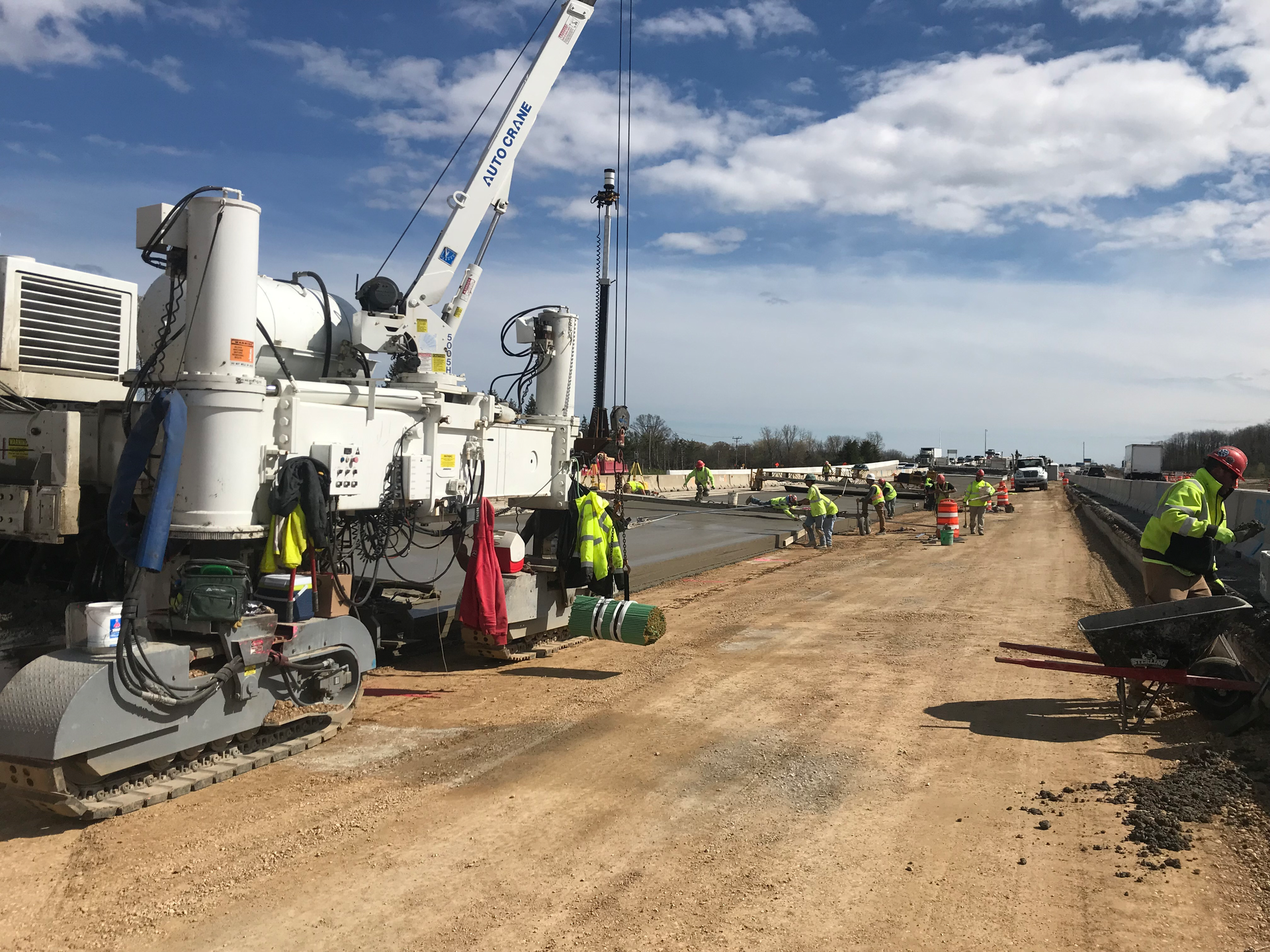
The Wisconsin Department of Transportation began work on a $410.5 million upgrade of I-94 South Freeway that passes through Milwaukee, Racine and Kenosha counties that improved safety and saved time and money by using techniques such as placing ground heaters to control frost so construction could continue in the colder months.Wisconsin DOTWisconsin Department of Transportation — I-94 North South Freeway Project (Operations Excellence, Large category)
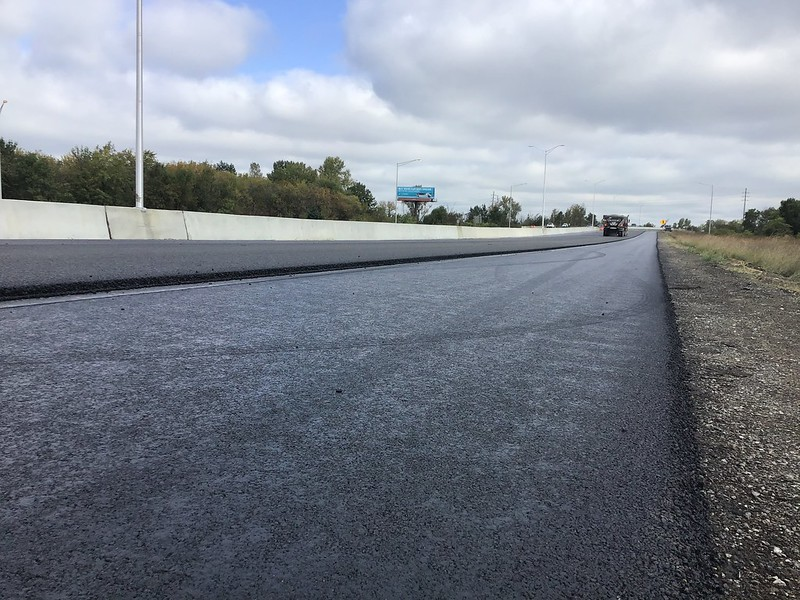
Interstate 255 in Metro East ranked as one of the worst roads in the state until the Illinois Department of Transportation’s $67 million rehabilitation. The project included bridge repairs, resurfacing, better highway lighting, and guardrail, safety and drainage upgrades.Illinois DOTIllinois Department of Transportation — Remaking I-255 in the Metro East (Best Use of Technology & Innovation, Medium category)
This is the third of four regional contests within the national America’s Transportation Awards competition. The three highest-scoring projects from each regional competition earn a place on a “Top 12” list of projects, which will compete for the Grand Prize – selected by an independent panel of industry judges – and the People’s Choice Award, chosen by the public through online voting.
The top two winners also receive $10,000 cash awards, to be donated to a charity or scholarship of the state DOT’s choosing.
The “Top 12 finalists” vying for the Grand Prize and People’s Choice awards will be announced this month, with online voting for the People’s Choice award beginning at the same time.
The winners of both Grand Prize and People’s Choice awards will be announced in October at the AASHTO Annual Meeting in San Diego.
The awards are sponsored by AASHTO, AAA and the U.S. Chamber of Commerce.
Did you miss our previous article…
https://www.tortowheaton.com/?p=223